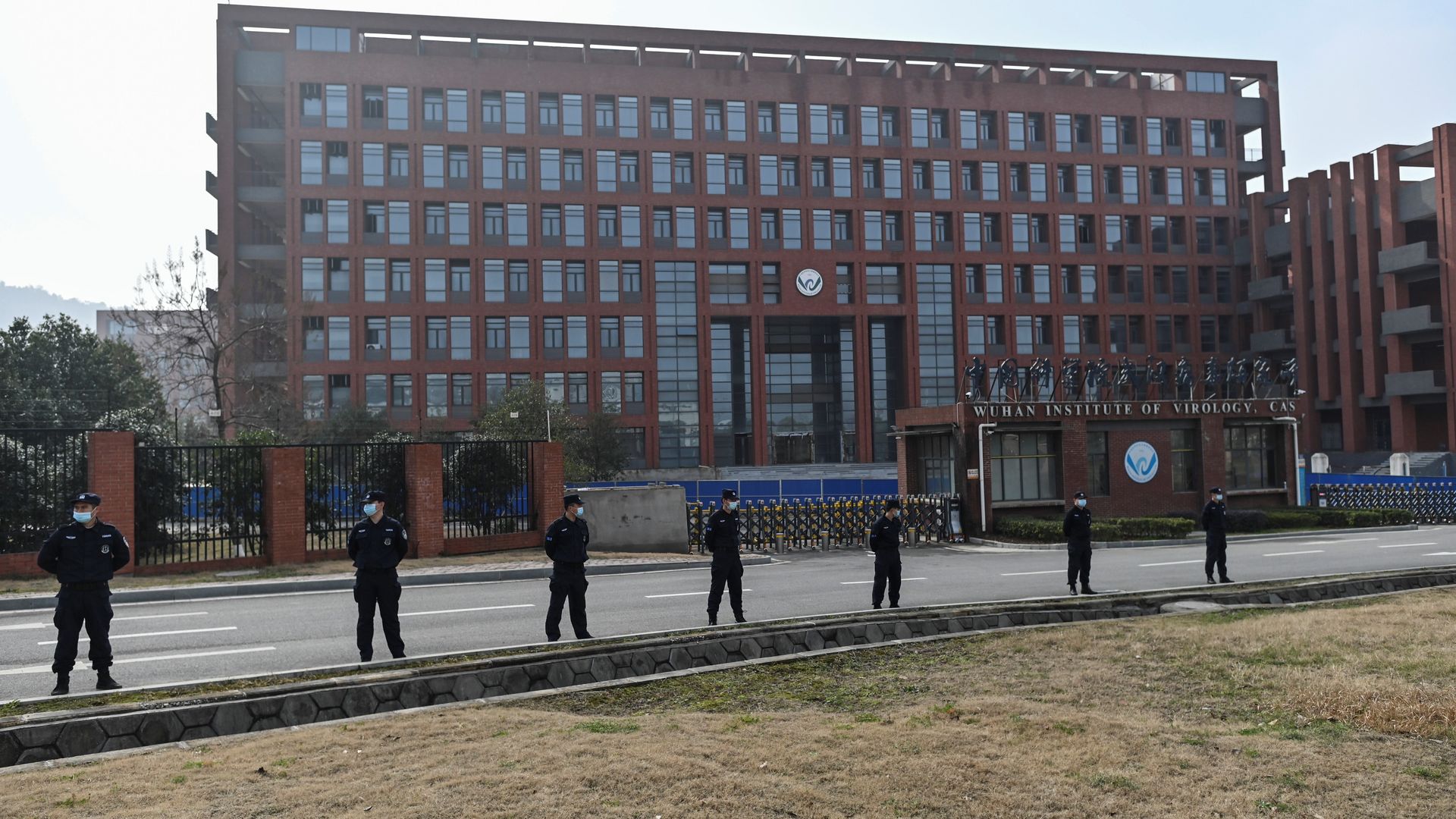| | | | | | | Presented By Radancy | | | | Axios Future | | By Bryan Walsh ·Aug 25, 2021 | | Welcome to Axios Future, where I regret to tell you that it is somehow still August. Today's Smart Brevity count: 1,635 words or about 6 minutes | | | | | | 1 big thing: Refugees face a future of rising walls |  | | | A pair of Guatemalan asylum-seekers sit outside the San Ysidro crossing port at the U.S.-Mexico border. Photo: Guillermo Arias/AFP via Getty Images | | | | The Afghanistan situation — hundreds of thousands of people desperate to flee their country with few safe and accepting places to go — is just one sign of a future that will be shaped by a growing migration crisis. Why it matters: Whether because of violence, persecution, climate change or economic distress, rising numbers of people will leave the only homes they've known in search of a safer and better life abroad — even as the politics in destination countries sours on accepting them. By the numbers: Even before their government collapsed in the face of American military withdrawal — prompting a mad dash for safety by people who worked with the U.S. and feared Taliban persecution — Afghans were fleeing their country in huge numbers. - According to UN data, 1.5 million Afghans fled to Pakistan in 2020, while another 780,000 escaped to neighboring Iran.
- That's just one part of a growing migration crisis around the world. On the U.S. southern border, officials reported nearly 200,000 encounters with migrants in July, the highest monthly total in nearly two decades.
- Dangerous migrant boat departures from northern Africa to southern Europe have been increasing in recent months, and more than 1,100 people have died while crossing the Mediterranean so far this year.
The big picture: 82.4 million people worldwide had been forcibly displaced from their homes as of the end of 2020, more than twice the total in 2011. - Those numbers are only likely to grow. According to a study from last year, more than 1 billion people globally could be displaced by 2050 because of climate change and its destabilizing effects.
Between the lines: Growing numbers of migrants and refugees are escaping their homes at the very moment when international politics toward migration have turned sharply negative. - According to the UN refugee agency, UNHCR, last year fewer than 35,000 refugees out of 20.7 million were actually resettled in a new country — a fraction of 1%.
- Greece, which saw nearly 1 million refugees enter its territory after the 2015 Syrian crisis, is erecting a 25-mile-long, heavily surveilled fence along its border with Turkey to stop asylum-seekers from Afghanistan.
- In the U.S., the Supreme Court on Tuesday blocked the Biden administration's efforts to roll back former President Trump's "Remain in Mexico" policy for asylum-seekers coming to the southern border.
Context: What's unfolding is one of the mega-trends of the 21st century: more people willing and often forced to leave their homes, and a colder welcome in destination countries, including the U.S. - A recent Harvard/Harris poll found that 80% of Americans think undocumented immigration is a "very serious" or "somewhat serious" problem, while 64% think the government should institute stricter border policies to reduce the border flow, leaving the political landscape on immigration "incredibly polarized," notes Dick Burke, CEO of the immigration services company Envoy Global.
- European leaders — fearful of another populist backlash — are resistant to taking on Afghan refugees, with EU foreign policy chief Josep Borrell Fontelles saying recently that member states want "to ensure no wide-scale migratory move toward Europe."
- The pandemic led to unprecedented border closures around the world, which choked off both documented and undocumented migration while possibly setting a template for future restrictions.
What they're saying: "If the principal political and economic binary of the world 20 years ago was left versus right, today it's open versus closed," says Alec Ross, a former U.S. diplomat and the author of the forthcoming book "The Raging 2020s." Read the rest |     | | | | | | 2. The dwindling chances of finding COVID's origin |  | | | Chinese police stand outside the Wuhan Institute of Virology as WHO staff visit on Feb. 3. Photo: Photo: Hector Retamal/AFP via Getty Images | | | | A U.S. intelligence review into the origins of COVID-19 has reportedly proved inconclusive, even as WHO experts warn that time is running out to do further studies on the question. Why it matters: We don't need to know how COVID-19 emerged to finally defeat the pandemic, but clearer answers will help prevent the next big outbreak — whether it comes from nature or human action. Flashback: President Biden launched a review in May after the intelligence community reported that it had "coalesced around two likely scenarios": human contact with an infected animal — what would represent a natural zoonotic spillover — and some kind of lab accident. - 90 days later, the intelligence agencies' work, which was presented to Biden on Tuesday, fell short of consensus, according to the Washington Post — meaning the U.S. appears not much closer to a clear answer.
Meanwhile, members of the WHO-led team that visited China earlier this year to investigate the pandemic's origins wrote in Nature on Wednesday that further work had stalled. - They warned that "the window is rapidly closing on the biological feasibility" of studies that aim to find the earliest traces of the virus in animals and humans.
- Because the antibodies that indicate past infections wane over time, any further delay to collecting samples or testing people who might have been exposed before December 2019 "will yield diminishing returns."
Read the rest |     | | | | | | 3. The AI adman |  | | | Illustration: Aïda Amer/Axios | | | | Marketing and advertising companies are increasingly using AI models to track trends and generate slogans. The big picture: Marketers and advertisers focus on two things: identifying and predicting trends that indicate what consumers want, and shaping messages that will appeal to them. - AI — and especially new language models that can be tuned to produce messages far quicker than even the slickest "Mad Men" copywriter — are ideal for both.
By the numbers: The global market for AI in advertising and marketing is valued at more than $12 billion, and it's projected to reach $107 billion by 2028, according to a recent report. - Research by Gartner predicts that by 2022, more than 30% of digital content will be created with the help of AI.
How it works: AI models are particularly good at drawing in vast amounts of data and identifying connections and correlations, which makes them excellent at instant trendspotting, says Daniel Anstandig, CEO of the enterprise tech platform Futuri. - Futuri's AI application TopicPulse takes real-time data from Facebook, Twitter, Instagram and 100,000 new sources and looks at early signals to determine what will be popular in a particular market or demographic up to 24 hours from the present.
- A newsroom or a brand content marketer "could look at a specific audience and determine where their investment of time and energy in terms of content generation is going to be best used," says Anstandig.
Between the lines: AI can increasingly help with generating that content as well. - Hamburg-based neuroflash, a marketing company, uses natural language processing AI to generate scores of suggested slogans, email subject lines and social media language.
- Its AI is then able to rank each suggestion on a 0–100 scale, based on historical data about customer preferences and calculating how different messages will resonate with different consumers.
- Big language models "are very good at generating possibilities," says Henrik Roth, a co-founder of neuroflash. "And then humans can bring an editorial quality to pick the best one," taking into account how the AI itself ranks suggestions.
Read the rest |     | | | | | | A message from Radancy | | Sony Pictures produces global career site using the Unified Platform | | |  | | | | By 2030, it's projected that there will be more jobs than workers — and automated solutions will become a necessity. What this means: To remain competitive, you'll need a data-driven solution that combines the latest technology and expertise to connect with diverse talent. See Sony's results. | | | | | | 4. A carbon removal deal worth watching |  | | | Part of the direct air capture system at the Carbon Engineering pilot facility in Squamish, British Columbia, Canada, in 2019. Photo: James MacDonald/Bloomberg via Getty Images | | | | Swiss Re, the giant reinsurance and risk management firm, signed a 10-year, $10 million deal with Climeworks to utilize direct air capture technology, writes Axios' Andrew Freedman. Why it matters: Swiss Re, which is aiming for net-zero emissions in its operations by 2030, is touting this as the first and largest long-term purchase agreement of its kind. - The two also agreed to a strategic partnership that includes generating risk management knowledge and risk transfer tools. They will also explore future investment and finance opportunities.
Context: Direct air capture is a technology viewed as a potential way for the world to transition to negative emissions in the latter half of the century, but it is not yet widely available at scale. |     | | | | | | 5. Worthy of your time | | A home of the future, shaped by the coronavirus pandemic (Michele Lerner — Washington Post) - The newest must-have real estate amenity? A quarantine room.
The world's largest computer chip (Matthew Hutson — The New Yorker) - One for the Annals of Size Matters, a profile of Cerebras Systems and its dinner plate-sized computer chip.
Pro-growth isn't anti-environment (Matthew C. Klein — The Overshoot) - The moral — and environmental — case for embracing economic growth.
How water shortages are brewing wars (Sandy Milne — BBC Future) - Why we might be uncomfortably close to "Mad Max"-style resource wars.
|     | | | | | | 6. 1 good thing: Football scores on COVID vaccinations |  | | | LSU's Tiger Stadium. Photo: Chris Graythen/Getty Images | | | | Football teams are leading the way on COVID-19 vaccination rates. Why it matters: The early success of pro and college teams in getting players and fans vaccinated shows that even reluctant Americans will get vaccinated — if you threaten to take away one of the things they love most: football. Driving the news: On Tuesday, Louisiana State University became the first SEC conference school to mandate either COVID-19 vaccination or a recent negative test for fans who want to watch the team in person. - That's especially notable because Louisiana is one of the least-vaccinated states in the U.S., with just 40% of adults fully covered.
- Other schools in the all-powerful SEC seem likely to follow LSU's lead, which could help boost vaccination coverage in southern states with low rates.
Between the lines: Pro football has also recorded high vaccination rates, with 88.5% of players having had at least one shot as of the end of July. - That's due in part to the NFL's strict policies. Teams that experience an outbreak among unvaccinated players could forfeit games and lose pay — a real penalty for a sport with just 17 regular-season games.
- Teams are also required to make unvaccinated players visually identifiable — a departure from other pro sports leagues, where it wasn't always clear who was vaccinated and who wasn't.
The bottom line: More than most other sports, football is run as a rules-following autocracy — and when it comes to vaccination rates at least, that's a plus. |     | | | | | | A message from Radancy | | How to reach some of the world's best talent | | |  | | | | Radancy's data-driven Unified Platform has helped bring Sony Pictures' employer brand to screens everywhere. Why it's important: By 2030, there will be more jobs than workers. To remain competitive, employers will need solutions that combine the latest tech and expertise to attract talent. | | |  | | It'll help you deliver employee communications more effectively. | | | | | | Axios thanks our partners for supporting our newsletters. If you're interested in advertising, learn more here.
Sponsorship has no influence on editorial content. Axios, 3100 Clarendon Blvd, Suite 1300, Arlington VA 22201 | | | You received this email because you signed up for newsletters from Axios.
Change your preferences or unsubscribe here. | | | Was this email forwarded to you?
Sign up now to get Axios in your inbox. | | | | Follow Axios on social media:    | | | | | |









No comments:
Post a Comment